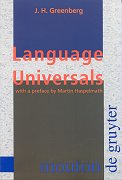Essentially unreadable by a non-specialist (that includes me!), but with the odd fascinating snippet, such as:
pp84-5.
An example of a more complex typology is
one based on grand-parent terms, for here there are four kin types to
be considered - father's father, mother's father, father's mother, and
mother's mother. In this instance there are fifteen logically possible
classifications. ... In the following table each type is listed,
together with a judgement as to whether it is frequent, uncommon, or,
at least to my present knowledge, non-existent:
A certain order is brought into this multiplicity of types if we search for those combinations of kin types which are never classified together in occurrent types, except in type 1 which involves a single term for all relatives. In fact, there is only one such set consisting of FaFa and MoMo. Among all terminologies which involve a classification, that is all outside of type 1, those for which I have found examples, namely 2, 3, 8, 9, 10, 12, and 15, put FaFa and MoMo in different classes.
1. A. FaFa, FaMo, MoFa, MoMo common 2. A. FaFa, FaMo B. MoFa, MoMo occurs 3. A. FaFa, MoFa B. FaMo, MoMo common 4. A. FaFa, MoMo B. FaMo, MoFa not found 5. A. FaFa B. FaMo, MoFa, MoMo not found 6. A. FaMo B. FaFa, MoFa, MoMo not found 7. A. MoFa B. FaFa, FaMo, MoMo not found 8. A. MoMo B. FaFa, FaMo, MoFa occurs 9. A. FaFa, FaMo B. MoFa C. MoMo occurs 10. A. FaFa, MoFa B. FaMo C. MoMo occurs 11. A. FaFa, MoMo B. FaMo C. MaFo not found 12. A. FaMo, MoFa B. FaFa C. MoMo occurs 13. A. FaMo, MoMo FaFa C. MoFa not found 14. A. MoFa, MoMo B. FaFa C. FaMo not found 15. A. FaFa B. FaMo C. MoFa D. MoMo common
